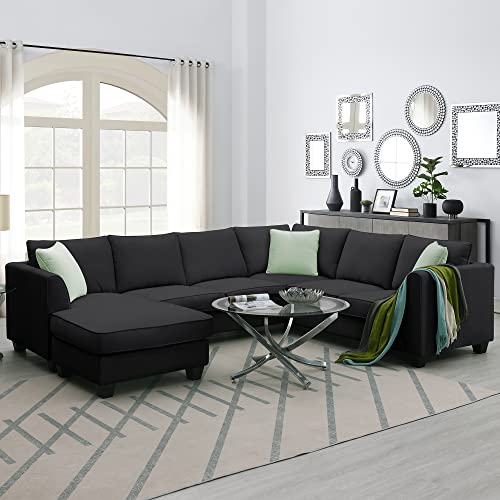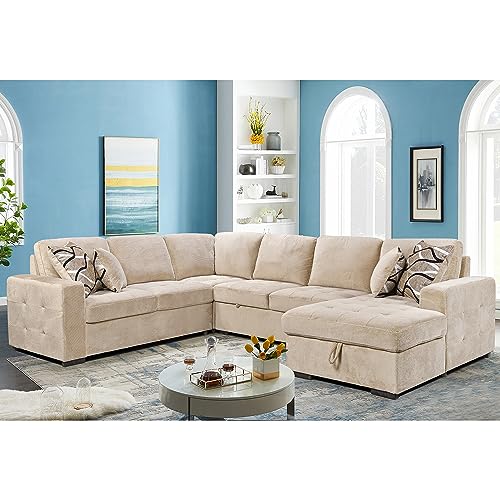14 Common Misconceptions About What Are U Shaped Valleys
페이지 정보
작성자 Nicole 작성일24-06-29 09:42 조회166회 댓글0건관련링크
본문
 What Are U Shaped Valleys?
What Are U Shaped Valleys?A U-shaped valley is an ancient geological formation with high, steep sides and an elongated or flat valley bottom. These valleys are formed by glaciation. They are often filled with lakes or rivers, sandtraps along a golf courses, kettle lakes (water hazards), or other natural features.
The process of glacial erosion creates Belffin Velvet U-Shaped Sectional Sofa Peacock Blue valleys when rocks are removed from the sides and the bottom of the valley. These valleys are found in mountainous areas around the world.
Glaciers are the primary reason for forming them.
Glaciers are huge bodies of ice that form and move down mountains. When they degrade the landscape, they create Explore Our Stylish U-Shaped Sectional Sofas Collection (Https://Www.Sofasandcouches.Com/) valleys that have flat floors and steep sides. These valleys are different from the valleys of rivers that are typically shaped like the letter V. While glacial erosion can occur in many places but these valleys are distinctive of mountain regions. They are so distinct that you can discern whether the landscape was formed by rivers or glaciers.
The process of creating a U -shaped valley starts by creating the V shape river valley. As the glacier is eroding the landscape, it encroaches upon the V-shaped river valley and creates an inverted U-shaped shape. The ice also scratches the surface of the ground, causing the valley's sides to have high and straight walls. This process is known as glaciation and requires an enormous amount of strength to move the earth in this way.
As the glacier continues to erode the landscape, it makes the valley larger and deeper. The ice is less frictional than the rocks. As the glacier moves down the valley, it causes friction on the rock surfaces and pulls the weakend rocks from the valley wall through a process called plucking. These processes work together to increase the width, depth and smooth the U-shaped valley.
These processes also cause a small side valley to hang above the main valley. The valley can be filled with ribbon lakes which are formed by the flow of water that flows through the glacier. The valley is also characterized with striations and ruts, till on the sides as well as moraines and till on the floor.
U-shaped valleys can be found all over the world. They are most common in mountainous regions, such as the Andes, Alps, Caucasus, Himalaya and Rocky Mountains. In the United States, they are typically found in national parks. Examples include Glacier National Park and the Nant Ffrancon Valley in Wales. In some instances valleys can extend to the coast and turn into Fjords. This is a natural process that happens when the glacier melts and it could take many thousands of years to get these valleys formed.
The ocean's depths are deep
U-shaped valleys are distinguished by steep sides that curve at the bottom and a wide, flat valley floor. They are formed by river valleys that were filled with glaciers during the Ice Age. Glaciers degrade valley floors through abrasion and plucking which causes the valley to widen and expand more evenly than with rivers. These kinds of features are prevalent throughout the world in mountainous areas which include the Andes, Alps, Himalayas, Rocky Mountains, and New Zealand.
The glacial erosion of a valley can change it into a U-shaped one by expanding and deepening it. The force of the glacier's erosion can also create smaller side valleys, which are often marked by waterfalls, to float above the main valley. These features are called "hanging valleys" because they are hung above the main valley as the glacier recedes.
These valleys may be surrounded by forest and contain lakes. Some valleys are dry and are used for farming, whereas others are flooded and may be visited as part of a hiking or kayaking trip. A large number of these valleys are in Alaska in the region where glacial melt is the most evident.
Valley glaciers are massive flowing ice like rivers that slowly slide down the slopes of mountains during a glacier. They can extend to depths of over 1000 feet and are the most prevalent form in alpine areas of valley erosion. They eat the rocks that lie at the bottom of the valley, causing depressions and holes that are filled with water. The lakes that result are wide and thin, and can be located in the peaks of certain mountains.
Another type of valley, a glacial trough is a U-shaped trough that extends into salt water and creates an Fjord. They are all over the world, including Norway which is where they're known as fjords. They are created by melting ice and are visible on maps of the world. They are distinguished by their steep sides and rounded sides in an U-shape. The trough walls are generally made of granite.
They are steep
A U form valley is a geological formation with steep, high sides and a smooth bottom. Glaciers are the cause of many of these valleys. They are frequent in mountainous areas. It is because glaciers slow downhill and then scour the land. Scientists once thought that glaciers wouldn't be able to carve valleys because they were too soft. However, now we know they can.
Glaciers form distinctive u-shaped valleys through the processes of abrasion and plucking. These processes widen, steepen and deepen V-shaped river valleys to an U shape by eroding. They also alter the slopes of the valley floor. These changes take place at the top of a glacier as it moves through a valley. This is why a U shape valley is usually wider at the top than at the bottom.
Sometimes, U-shaped valleys may be filled with lakes. The kettle lakes are formed in hollows that have been eroded by the glacier, or blocked by the moraine. The lake can be a temporary feature while the glacier melts, or it may remain when the glacier recedes. They are usually located in conjunction with cirques.
A flat-floored Valley is another type of valley. It is formed by streams which erode the soil. However, it does not have a steep slope, like the U-shaped ones. They are usually located in mountainous areas and can be much older than other types.
There are many different types of valleys around the world and each has a unique appearance. The most well-known type of valley is the V-shaped one, however there are some rift valleys that are U-shaped as well as. A rift valley is formed when the earth's surface splits into two. They are usually narrow valleys with steep sides. The Nant Ffrancon valley in Snowdonia, Wales is a good illustration of this.
They are broad
Unlike V-shaped valleys, U-shaped valleys have broad bases. They are most often found in mountain ranges and are shaped by glaciers. Glaciers are huge blocks of snow and ice that erode the landscape as they slide downhill. They erode valleys through friction and abrasion. This process is referred to as Scouring. As they degrade the landscape, glaciers create an unusual shape that resembles the letter U. These valleys are known as U-shaped valleys. They can be found in a variety of locations across the world.
The formation of these valleys takes place when glaciers erode existing river valleys. The weight of the glacier and its slow movement erode the valley's sides and floor and create a distinctive U-shaped shape. This process is known as glacial erosion and has resulted in some of the most beautiful landscapes on Earth.
These valleys are sometimes called glacial troughs or trough valleys. They are found throughout the globe, but are particularly found in areas that have glaciers and mountains. They can vary in size from a few meters to several hundred kilometers. They also can vary in depth and length. The deeper the valley is, the greater the variation of temperature will be.
A fjord or ribbon lake is formed when a U-shaped valley fills with water. The ribbon lakes are formed in depressions where glaciers have eroded less resistant rocks. They can also form within valleys, where the glacier has been stopped by a wall.
U-shaped valleys may also contain other glacial features, like moraine dams, hanging valleys, and erratics. Erratics are massive rocks that were dumped by the glacier during its movement. The erratics are frequently used to mark the boundaries of glaciated areas.
 Hanging valleys are smaller side valleys that are suspended above the main valley created by the glacier. These valleys are not as ice-filled and are not as deep. They are carved by tributary glaciers and are usually overshadowed by waterfalls.
Hanging valleys are smaller side valleys that are suspended above the main valley created by the glacier. These valleys are not as ice-filled and are not as deep. They are carved by tributary glaciers and are usually overshadowed by waterfalls.댓글목록
등록된 댓글이 없습니다.
